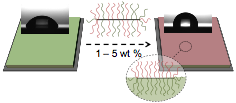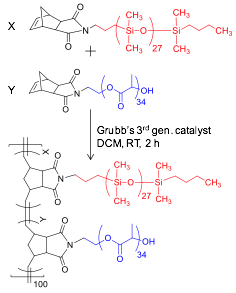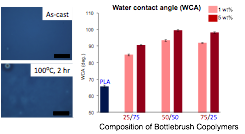Reports: DNI752345-DNI7: Elucidating the Structure and Properties of Model Bottlebrush Polymers
Rafael Verduzco, PhD, Rice University
To determine if bottlebrush
copolymers spontaneously segregate to the top of thin film blends, we first
measured the water contact angle (WCA) for bulk PLA films and found a value of
65.7 ± 1°.















